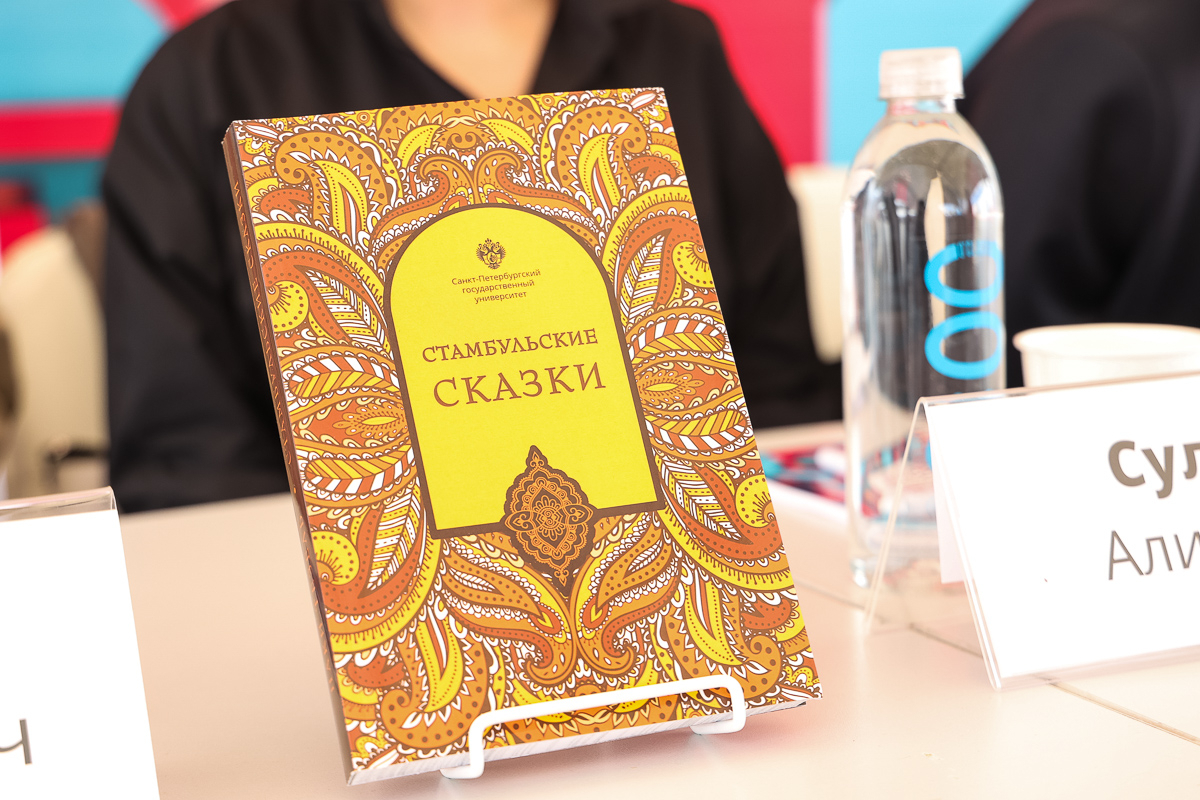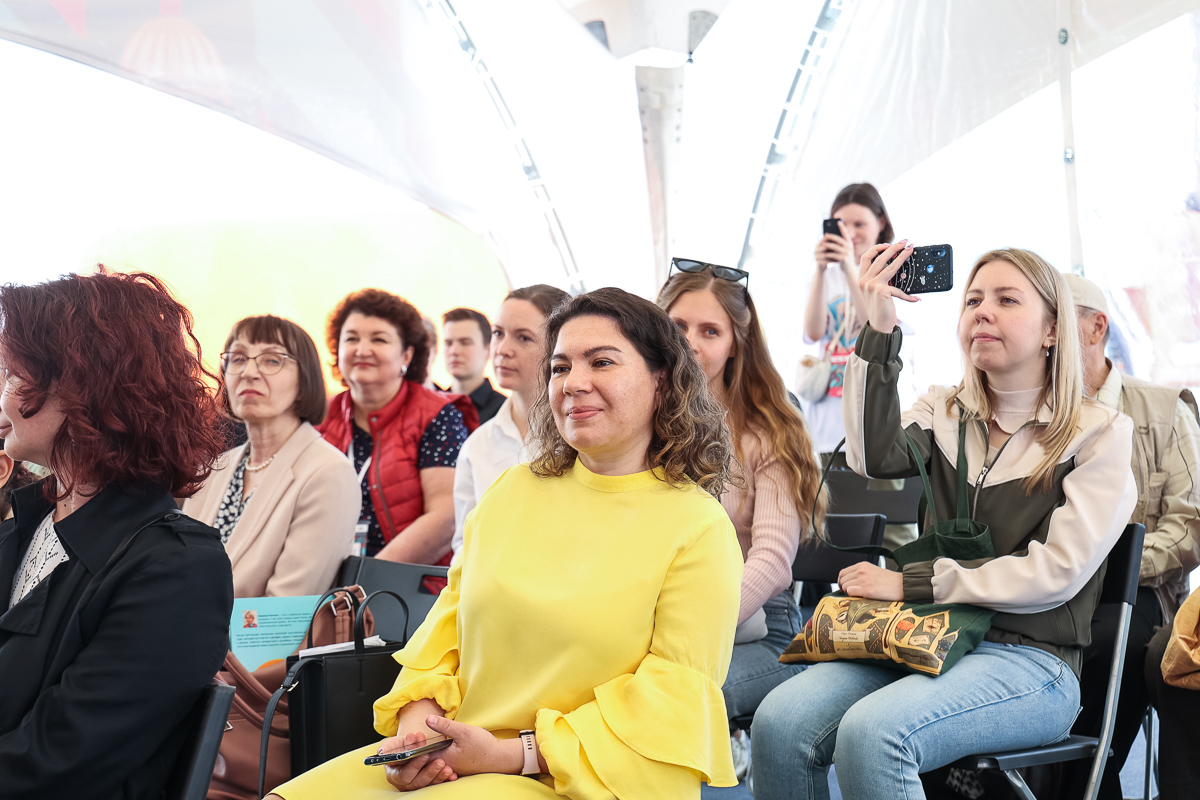Tales of Istanbul, Russian as a foreign language in the 18th century, and medieval heroes. St Petersburg University publications at the International Book Fair
At the 2023 St Petersburg Book Fair, the University has presented books published by the St Petersburg University Publishing House. The newest publications included: a collection of tales collected in Istanbul and its suburbs; a monograph devoted to the first Russian language textbook for foreigners; and a two-volume book dedicated to understanding the phenomenon of using medieval images in modern times.
Turkish urban folklore
The Book Fair featured a presentation of a book titled "The Tales of Istanbul". It is a collection compiled and recorded by the Turkish researcher Naki Tezel.The presentation of the new book, which took place within the framework of the St Petersburg International Book Fair, was visited by Consul General of the Republic of Turkey in St Petersburg Mr Ozgun Talu. He greeted the audience and spoke about the importance of this publication in the study of Turkish culture. ’Istanbul is one of the oldest cities in the world. Throughout its history, it has accumulated a large number of cultures and civilisations. Due to that, it has a great diversity of folklore. Undoubtedly, one of the most important elements of this cultural heritage is wonder tales. They have been passed down from generation to generation for many centuries,’ he emphasised.

Aleksei Obraztsov, Associate Professor in the Department of Turkic Philology at St Petersburg University, who was one of the translators of the book, spoke about the history of recording such tales in Turkey. The second translator Aliya Suleimanova, Associate Professor in the Department of Turkic Philology at St Petersburg University, described the content of the tales, their characters and plots.
The results of the presentation were summed up by the editor of ’The Tales of Istanbul’ Apollinariia Avrutina, Professor of St Petersburg University and Director of the Centre for Contemporary Turkish Studies and Russia—Turkey Relations at St Petersburg University. ’My task as the editor of the «Contemporary Turkish Studies» series was to present to the Russian reader books that, on the one hand, would present a scientific view of the culture of Turkey, and on the other hand, would not be just boring scientific books, but would make Turkish culture, literature and history attractive for the public at large,’ she said.
Russian as a foreign language in the 18th century
Leonid Moskovkin, Professor in the Department of Russian as a Foreign Language and Methods of Its Teaching at St Petersburg University, presented a publication titled "The First Russian Printed Textbook of Russian as a Foreign Language: The Study and the Text". Its authors are Leonid Moskovkin and Sergei Vlasov, Associate Professor in the Department of French at St Petersburg University.

The monograph presents the results of a study of "French and Russian Grammar", the first printed textbook of the Russian language for foreigners in Russia. It was published in 1730 in the printing house of the Russian Academy of Sciences. The authors started working on this book in 2007. For 15 years, Leonid Moskovkin and Sergei Vlasov have been analysing the ’French and Russian Grammar’ and studying the history of its creation. During this process, they ran upon a large number of "pitfalls". For example, the researchers questioned the generally accepted authorship of the textbook and were able to find out and prove who had actually taken part in its creation.
’This study made it possible to solve a large set of questions of a linguistic, pedagogical, cultural, and bibliological nature related to this unusual book. We have been working on this book for 15 years and we were extremely passionate. This was haunting us for quite a long time. We have described our findings in this publication,’ summed up Leonid Moskovkin.
Medieval heroes in the service of modernity
As part of a lecture on the study of the phenomenon of medievalism in Central and Eastern Europe and the Balkans, scholars from the Institute of History of St Petersburg University presented a two-volume book titled "Mobilised Middle Ages". This research has been carried out since 2016 with the support of the Russian Science Foundation. The St Petersburg University historians tried to find answers to the following questions: how can we establish the chronological boundaries of the Russian Middle Ages?; what place this era occupies in the historical consciousness of modern society?; and which historical characters are the most popular objects for reflection in art?
The painting by Ilya Repin "Ivan the Terrible and His Son Ivan on 16 November 1581" is a landmark here. This is a case of a work of art influencing the image of Ivan IV Vasilyevich much more than all the works of modern historians.
Evgenii Rostovtsev, Associate Professor at St Petersburg University
Evgenii Rostovtsev, Associate Professor in the Department of the History of Russia from Ancient Times to the 20th Century at St Petersburg University, noted that the researchers were interested in how certain myths associated with specific events had been formed. They also focused on the national narrative in general. He noted that a rather limited pantheon of heroes had developed in Russian history. It goes back to the "Russian Primary Chronicle", "The Book of Degrees of the Royal Genealogy", "Synopsis" by Innokenty Gizel, and other old texts. Thus, the idea of Russian history was completely formed in the 16th and 17th centuries. ’Most of the ideas about the national heroes were established by that time, and some of them, like Vladimir the Great and Dmitry Donskoy, emerged even earlier. That is why, according to our hypothesis, this pantheon was so stable,’ Evgenii Rostovtsev explained. ’Starting from the 18th century, there were practically no new heroes added to this pantheon. This myth worked, as was a set of characters that had developed on the basis of sources no older than the 17th century. It was further broadcast in cultural memory in a variety of manifestations, including works of art. This is its peculiarity for the Russian consciousness.’
Medievalism is the use of medieval symbols and images to give meaning to modern processes. It manifests itself in: high and popular culture; works of literature and art; political and national discourses; and all areas of life that use symbolism, from arts and crafts to commercial advertising and computer games.














